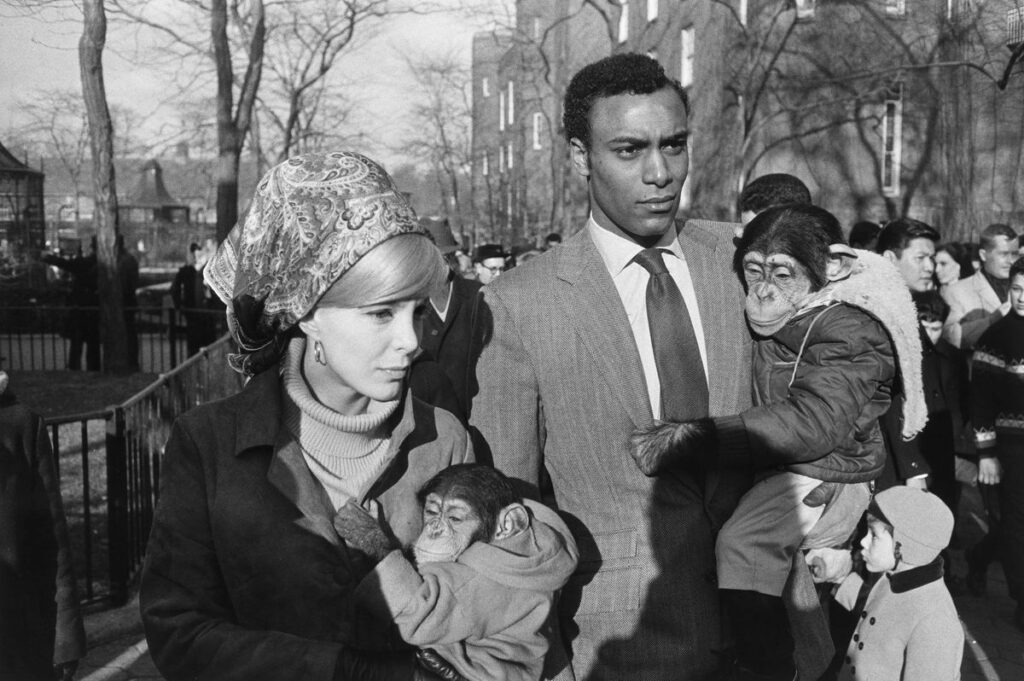“The voracity defined him. He was always taking photos because, he said, he wanted to discover what something would look like once it was converted into a photograph,” says Drew Sawyer, curator of the exhibition on Garry Winogrand (1928-1984) that until September 5 traces the career of this Bronx-born photographer at the Fundació Mapfre’s KBr center in Barcelona.
Proof of this voracity is the immense legacy left by this benchmark of “street photography”, upon his premature death., at 56 years of age, he was diagnosed with a cancer that struck him a month after he was diagnosed: he left 5,000 undisclosed rolls that he would never see and 4,100 developed reels without going into contact sheets, which would translate into more than 300,000 unedited images .
He often planted his tripod in the middle of the sidewalks, especially those in his native New York, or took the photos from the car driving through the streets of, for example, Los Angeles. In many of them, with abundant inclined approaches, anonymous people of all hair and condition avoiding him, looking at him or ignoring him, surprised figures in any daily situation.
What to think
“They are disorganized images, very different from each other, with multiple themes in the same scene , that lead the viewer to wonder what he should think of them,” says the curator and curator of the Brooklyn Museum while pointing to one of his favorite photos.
It features four well-dressed elderly ladies walking down a New York sidewalk in 1970. “Their feet are in perfect, almost magical alignment. They pass large garbage bags and a defecating dog. Behind them , a young woman in jeans and possibly without a bra, as if championing the new feminist generation. Focus on reality . ”
Winogrand studied Fine Arts, but “painting was too slow for him and after working as a freelance photojournalist for modest magazines such as ‘Collier’s’ in the 1950s, his artistic gaze emerged, which he maintained throughout his career,” explains the curator. before a chronological tour of 169 black and white photos and, for the first time in Spain, a projection of 152 color slides.
Little known color
Although he was best known for his black and white production, he made almost 50,000 color slides, another sign of his photographic voracity . “But it not printed because at the time was far more expensive and taught with a projector. And they have seen little because in 1967, in an exhibition at MoMA, burned eight which showed the damaged the clarifies projector Sawyer-.
In life he did not expose them again. ” To make positive a large part of his work and to vindicate Winogrand was dealt with before and after his death by John Szarkoswki, MoMA’s chief of photography since 1962.
New York, 1968.
Winner of three prestigious Guggenheim grants (1964, 1969 and 1979) that allowed him to travel by car throughout the country and dedicate himself to documentary and artistic photography, Winogrand claimed that he photographed to “find out who we are, how we feel,” he played with ambiguity and “he did not seek to denounce or send a concrete social, political or moral message , he did not set a narrative, he only framed a part of the world. His was a non-idealized vision of society.”
Humans at the zoo
Sawyer draws attention to another photo in which a wolf appears to stalk a couple at the zoo. The man stares hauntingly at the woman. Winogrand seems to point out that man, like the wolf, is a hunter. In another image of a curious series about animals , which he made in New York zoos and aquariums and in which he had a certain humorous vein, he also focuses on a couple: she white, he black, both with two chimpanzees in their arms dressed as elegantly as they are.
“It is from 1969, when he separated from his first wife and went with his children to those open spaces that allowed him to capture people as if they were in captivity,just like animals, and exposed to your camera. They were times of debate on freedom of expression and on the racial gap “, says the commissioner.
The hidden photos of the Civil War in Barcelona
In that decade, his images of the streets captured the vital hunch and the spirit of a generation that began to show a certain unease in the face of a world threatened by nuclear weapons (the missile crisis), convulsed by race riots, the Indochina wars and Vietnam and the assassination of John F. Kennedy .
The American president was captured precisely during the 1960 Democratic convention, from behind. At his feet, the viewer sees his face through a monitor. “It was his way of showing how the media mediate or filter the message.”
